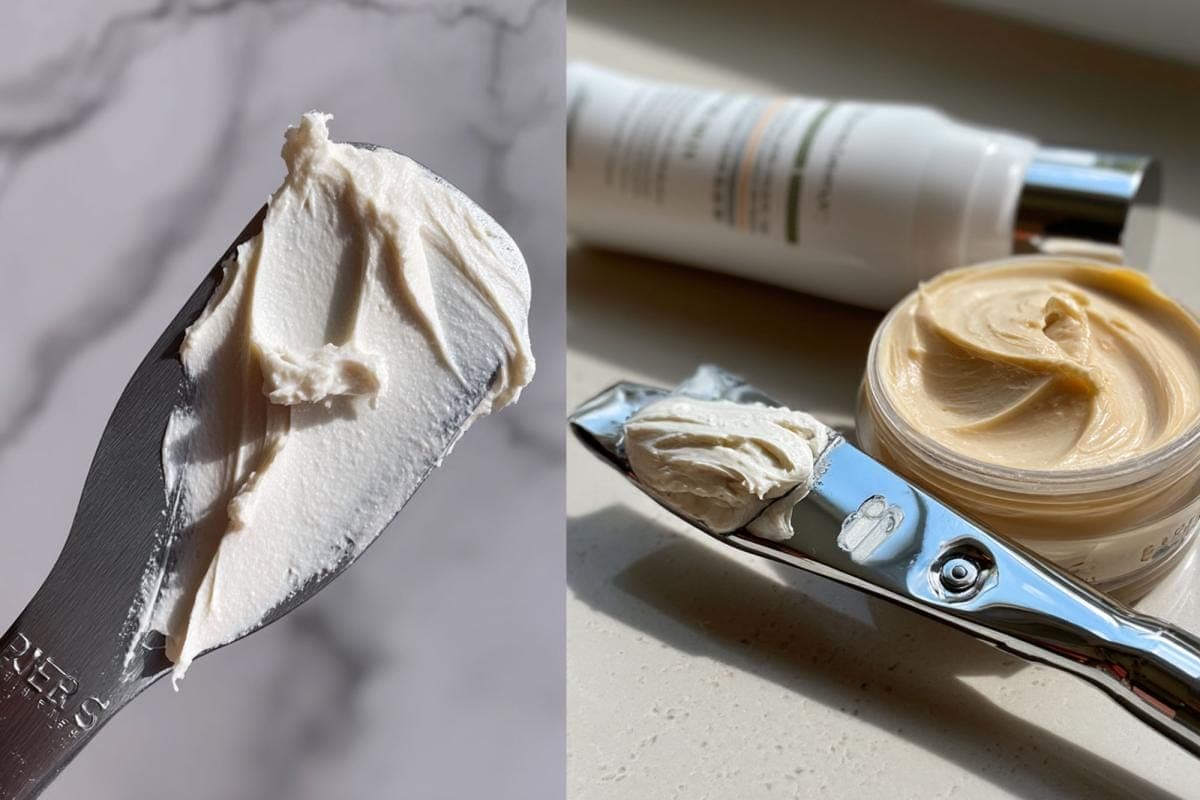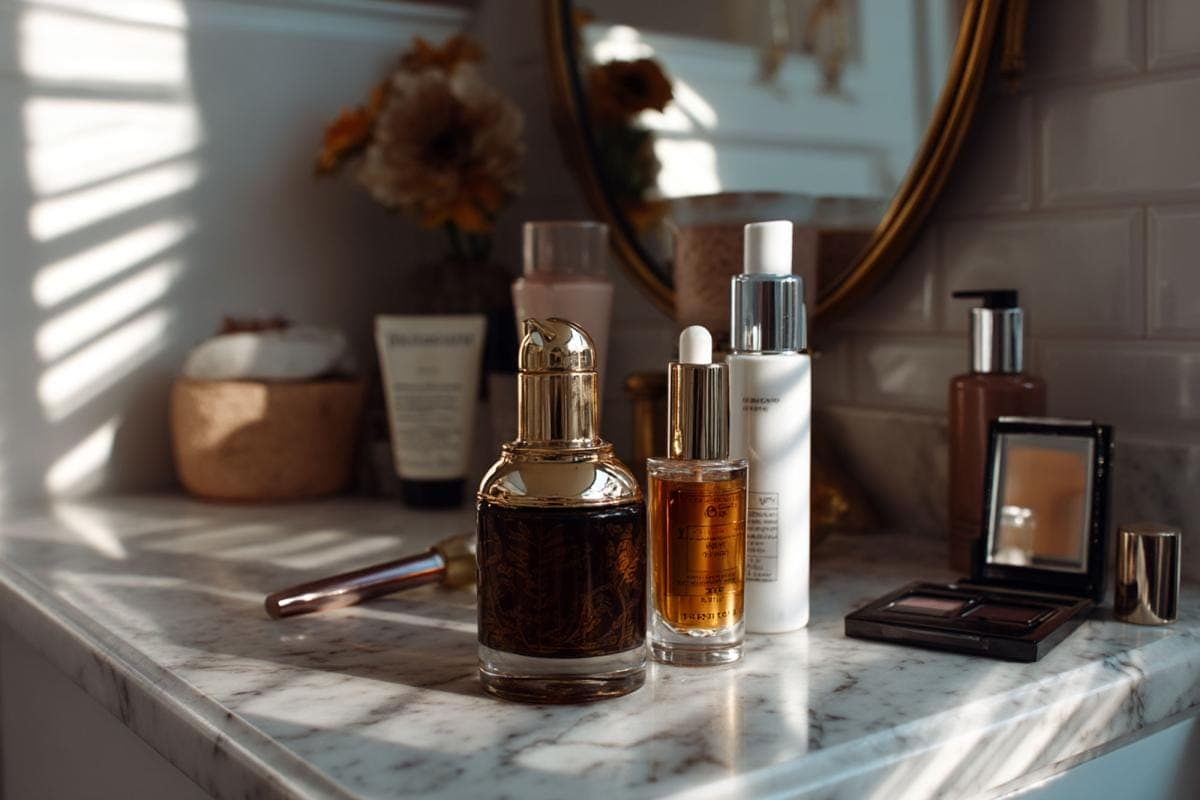If you click on links we provide, we may receive compensation.
I still remember staring at a tiny glass jar of face cream that cost more than my first month’s cell-phone bill and thinking, “Surely the formula inside must contain gold flakes or unicorn tears.” Many of us have faced a similar moment of sticker shock. Yet prestige counters and TikTok feeds keep insisting that a three-figure serum is the shortcut to glow. So what exactly drives those breathtaking price tags, and when does paying extra truly translate to better skin? Let’s trace the price of beauty from lab bench to vanity and see where the money goes.
Sticker Shock in the Skin Care Aisle
Walk into any department store today and you’ll spot moisturizers hovering around two hundred dollars, with limited-edition jars creeping far higher. Shoppers clearly keep buying: a recent survey found the average American now spends $897 a year on appearance-related products and services. Global sales echo the trend. Analysts at SkyQuest report that premium cosmetics generated $123 billion in 2024 and are on track to top $198 billion by 2032. Those numbers raise a simple question: is the formula inside a prestige jar proportionately better, or are we mostly paying for gloss, glass, and marketing?
Why Luxury Brands Charge More
Every beauty launch travels a long, expensive road before it meets your skin. Research and development require time in stability chambers, safety testing, consumer trials, and sometimes years of patent wrangling. Giant multinationals fold those costs into pricing. Then come layers of markups: elegant packaging, prime retail real estate, commissions to beauty advisors, influencer fees, and global advertising campaigns. Each layer adds cents that eventually snowball into dollars. Because luxury labels guard their reputation, they also incur strict batch-to-batch quality control costs. Those expenses may not improve the final formula’s potency, but they do keep texture and fragrance identical across continents — something mass retailers often accept small variations on to keep shelf price down.
When Ingredients Justify the Expense
Despite the cost of branding, sometimes a high price does align with higher performance. Think of stabilized vitamin C derivatives or next-generation retinoids that avoid irritation. These patented actives remain under exclusive license for years, and suppliers charge a premium. A small brand hunting for novelty peptides, for instance, might pay fifty times more per kilo than they would for glycerin. Some prestige lines also push concentration boundaries; one well-known niacinamide serum claims a 15 percent dose, whereas drugstore options hover near 4–5 percent. Because the skin can only absorb so much, more isn’t always better, but a leap in percentage can offer faster results for conditions like hyperpigmentation. Here, the math of efficacy sometimes tilts toward higher spend.
Packaging Patents and Production Lines
That thick glass bottle does more than sit pretty on your shelf. Airless pumps prevent light- and oxygen-sensitive ingredients from degrading. Miron violet glass filters certain wavelengths that break down botanical antioxidants. These materials can cost several dollars apiece before any product is even filled. While affordable brands increasingly adopt clever packaging, economies of scale matter. If a company only plans to sell twenty thousand units of a serum, it cannot negotiate the same packaging deal as a conglomerate ordering two million. Ironically, niche artisanal labels may face higher per-unit costs than their corporate rivals, pushing retail price skyward even when marketing budgets remain modest.

How Psychology Shapes Perceived Value
Price doesn’t just cover costs — it shapes expectation. Behavioral economists call this “price-quality inference.” When a cream sells for two hundred dollars, consumers subconsciously anticipate luxurious texture and a near-magical glow. If the same jar were marked fifteen dollars, we might dismiss it as ineffective before the first application. Brands understand this bias. They often position a hero product deliberately high to cast an aspirational halo over an entire range. The rest of the lineup, priced lower but still premium, suddenly appears like a bargain. That anchoring tactic works because many of us equate “expensive” with “safer” or “clinically backed,” though regulatory bodies judge all over-the-counter skincare by the same standards.
Smart Ways to Decide Where to Spend
So when does it make sense to splurge? First, read the ingredient list rather than the price tag. Actives should appear toward the top, and packaging should protect those actives. If a formula leads with water, glycerin, and silicone, a cheaper counterpart likely exists. Second, consider personal tolerance. Sensitive skin might benefit from the research behind a patented slow-release retinoid instead of a generic high-strength acid. Third, factor in frequency. Daily staples like cleansers and body lotion vanish quickly; pumping twenty dollars into each-use cleansing is rarely efficient when the product spends seconds on skin. By contrast, a leave-on serum offering measurable results may justify extra dollars per milliliter.
Case Studies Luxury Versus Affordable Options
Take the iconic Crème de la Mer, priced around $200 for 30 ml. Its selling story centers on a bio-fermented “Miracle Broth” and a carefully guarded emulsification process. Meanwhile, several mid-priced brands now include comparable ferment filtrates and sea kelp in moisturizers costing under $40. Blind trials often show users can’t reliably identify which is which after four weeks. Another study comparing an $80 glycolic acid peel pad to a $12 alternative found similar stratum corneum exfoliation rates after four uses. Yet not all comparisons end in a tie. Certain prescription-strength style retinoids formulated for cosmetic counters — think Adapalene 0.3 percent or Granactive Retinoid 2 percent emulsions — truly offer clinically proven wrinkle reduction that cheaper botanical retinol “alternatives” cannot match. The lesson: evaluate claim substantiation, not brand lore.
Ethics Sustainability and the Price Tag
Many shoppers willingly pay extra for cruelty-free certification, fair-trade sourcing, or low-carbon manufacturing. These values carry tangible costs, from audits to biodegradable pumps. A luxury brand might afford biodegradable sugarcane tubes because its margins cushion the switch, while a drugstore line struggles to justify the expense. Still, some high-profile names cling to single-use plastic packaging simply because the glossy look suits their legacy identity. Price alone does not guarantee ethical choices; consumers still need to vet a company’s impact reports and supply-chain transparency.

Frequently Asked Questions
Are expensive products always safer?
No. The FDA and EU regulate all cosmetics for safety regardless of price. A $12 moisturizer must meet the same toxicity limits as a $120 one. Formulas aimed at sensitive skin can exist at any price point.
Does a higher percentage of active ingredients equal better results?
Not necessarily. Skin has absorption limits. A 10 percent niacinamide serum may work just as well as a 15 percent version if receptors are saturated. Look for published clinical data rather than a numbers race.
Is designer fragrance in skincare worth paying for?
Fragrance is subjective. Luxury blends may smell delightful, but they add no treatment benefit and can irritate reactive skin. Unscented counterparts often cost less and perform the same task.
Why do some cheap products feel less elegant?
Texture chemistry involves expensive silicones, micro-emulsifiers, and sensory modifiers. Dropping these lowers cost but can leave a formula feeling sticky or heavy. If sensory pleasure matters to your routine, paying more could make you likelier to stay consistent.
Can I mix prestige and budget items?
Absolutely. Many dermatologists recommend investing in a targeted treatment product and saving on basic cleansers or SPF, provided the sunscreen meets broad-spectrum and water-resistance standards.
Where the Money Makes Sense
After fifteen years of testing everything from five-dollar droppers to triple-digit ampoules, my rule is simple: pay for proven actives and airtight packaging, not for crystal lids or celebrity-shot campaigns. Ingredients like stabilized vitamin C, certain peptides, or encapsulated retinoids sometimes cost more because they truly are harder to produce. If those actives answer a specific skin need of yours, a higher price may feel justifiable — especially when the product lasts several months. For a basic hyaluronic hydrator or cleansing balm, a trip down the drugstore aisle often delivers equal payoff.
The Bottom Line for Your Wallet and Your Face
Beauty is personal, intimate, and oddly emotional. Marketers know this, and they weave price into the story they sell. Your best defense is a calm inspection of the label, a quick search for clinical studies, and a clear sense of your own skin priorities. Splurge when the formula offers unique technology or unbeatable sensory pleasure that you genuinely enjoy. Save whenever a humble tube performs the same task. By shifting focus from prestige to performance, you’ll keep both your complexion and your budget in healthy shape.




